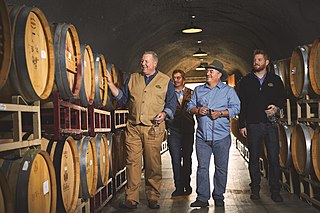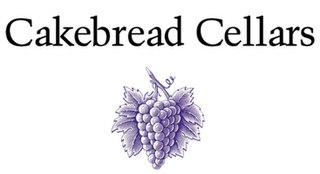
Cabernet Franc is one of the major black grape varieties worldwide. It is principally grown for blending with Cabernet Sauvignon and Merlot in the Bordeaux style, but can also be vinified alone, as in the Loire's Chinon. In addition to being used in blends and produced as a varietal in Canada and the United States, it is sometimes made into ice wine in those regions.

Malbec is a purple grape variety used in making red wine. The grapes tend to have an inky dark color and robust tannins, and are known as one of the six grapes allowed in the blend of red Bordeaux wine. In France, plantations of Malbec are now found primarily in Cahors in South West France, though the grape is grown worldwide. It is also available as an Argentine varietal.

Chile has a long history in the production of wine, with roots dating back to the 16th century when the Spanish conquistadors introduced Vitis vinifera vines to the region. In the mid-19th century, French wine varieties such as Cabernet Sauvignon, Merlot, Carmenère, and Franc were introduced. During the early 1980s, the Chilean wine industry underwent a renaissance with the introduction of stainless steel fermentation tanks and the use of oak barrels for aging. This led to a rapid growth in exports as quality wine production increased. The number of wineries in Chile rose from 12 in 1995 to over 70 in 2005.

New World wines are those wines produced outside the traditional winegrowing areas of Europe and the Middle East, in particular from Argentina, Australia, Canada, Chile, Mexico, New Zealand, South Africa and the United States. The phrase connotes a distinction between these "New World" wines and those wines produced in "Old World" countries with a long-established history of wine production, essentially in Europe, most notably: France, Italy, Germany, Spain and Portugal.
DeLille Cellars is a winery in Woodinville, Washington, USA. Located in the Hollywood District of Woodinville at the former Redhook Brewery, DeLille's hospitality venues include The Tasting Room and The Restaurant at DeLille Cellars. DeLille Cellars specializes in wines using the Bordeaux grape varieties: Cabernet Sauvignon, Merlot, Cabernet Franc, and Petit Verdot. In 2000, DeLille won The New York TimesWine Today.com "Winery of the Year" award. It is one of Washington state's premier cult wines.

Argentina is the fifth largest producer of wine in the world. Argentine wine, as with some aspects of Argentine cuisine, has its roots in Spain. During the Spanish colonization of the Americas, vine cuttings were brought to Santiago del Estero in 1557, and the cultivation of the grape and wine production stretched first to neighboring regions, and then to other parts of the country.
Luján de Cuyo is the district capital of the Luján de Cuyo Department located in the west of the Mendoza Province of Argentina. It forms part of the Greater Mendoza metropolitan area.

Mendoza Province is Argentina's most important wine region, accounting for nearly two-thirds of the country's entire wine production. Located in the eastern foothills of the Andes, in the shadow of Aconcagua, vineyards are planted at some of the highest altitudes in the world, with the average site located 600–1,100 metres (2,000–3,600 ft) above sea level. The principal wine producing areas fall into two main departments-Maipú and Luján, which includes Argentina's first delineated appellation established in 1993 in Luján de Cuyo. The pink-skinned grapes of Criolla Grande and Cereza account for more than a quarter of all plantings but Malbec is the region's most important planting, followed closely by Cabernet Sauvignon, Tempranillo and Chardonnay. Mendoza is considered the heart of the winemaking industry in Argentina with the vast majority of large wineries located in the provincial capital of Mendoza.

Trapiche is a winery in Mendoza, Argentina. It was founded in 1883 and consists of over 1000 hectares between several Mendoza vineyards. It is a two-time winner of the International Wine and Spirit Competition Argentine Wine Producer of the Year award, and is the largest producer of wine in Argentina. Trapiche is owned by Grupo Peñaflor, one of the first ten wine producers in the world.

Breaux Vineyards is a Cajun owned and operated winery and vineyard located in Purcellville, Loudoun County, Virginia. Founded by E. Paul Breaux, Jr. in 1997, the 100% estate grown winery was one of three United States wineries to be named in the book "250 Best Wines 2012" by Oz Clarke for their Viognier, which landed at #87 in the publication. Breaux Vineyards is one of Virginia's largest grape growers & suppliers of wine grapes, bulk juice, and bulk wine to other East Coast U.S. wineries. The company logo is a red Crawfish, which pays homage to the Breaux family's Cajun heritage because they are often used in the local Cajun cuisine in Louisiana.
Colgin Cellars is a winery in Napa Valley, California, founded in 1992.

The Bespoke Collection is a wine producer and lifestyle brand based in Yountville, California, United States. The company comprises two wine labels: Blackbird Vineyards and Recuerdo Wines, and a wine, art and design gallery called Ma(i)sonry Napa Valley. Bespoke Collection also has an additional art gallery in St. Helena, California called I. Wolk Gallery.

Silver Oak Cellars is a family-owned, California winery dedicated to producing only Cabernet Sauvignon. Silver Oak was established in 1972 by Ray Duncan and Justin Meyer. It is currently operated by Ray's sons David Duncan, who serves as the President and CEO, and his brother, Tim Duncan, who serves as Executive Vice President. Silver Oak has two wineries; one in Oakville in the Napa Valley and one in Healdsburg in the Alexander Valley. The Duncan Family also established Twomey Cellars in 1999, which has wineries in Calistoga and Healdsburg.

Justin Meyer was an American vintner, enologist, and member of the Christian Brothers. He was the founder along with Raymond Twomey Duncan of Silver Oak Cellars in 1972, a successful winery based in the Napa Valley and Alexander Valley. Today Duncan's sons David Duncan and Tim Duncan run Silver Oak Cellars, as well as Twomey Cellars, established in 1999. Meyer sold his share of the company to Duncan in 2001. One of California's top wine experts, he was president of the American Vineyard Foundation in the 1990s and also held numerous other positions in the wine industry. The San Francisco Chronicle cites Meyer as "one of the legends of the Napa Valley".

Blankiet Estate is a California wine estate owned by Claude and Katherine Blankiet. Located in the foothills of the Mayacamas Mountains in the Napa Valley, the estate produces a portfolio of wines from their Paradise Hills Vineyard.

Baldacci Family Vineyards is a California winery located in the Stags Leap District AVA of Napa Valley. Founded in 1998, Thomas and Brenda Baldacci were entranced by the beauty of the Napa Valley and the timeless heritage of the Stags Leap District. The generations before had left a deep and abiding affinity for the land from which came not only their livelihood, but their legacy. For the Baldacci’s, family is everything. When they purchased the Stags Leap property, over 18 years ago, Thomas and Brenda knew that they had found a place for their clan to stay connected through the generations. As each new vintage unfolds, they look forward to sharing their wines and their story, with you.

Cakebread Cellars is a Napa Valley winery known for its Chardonnay and Sauvignon Blanc wines, which are internationally distributed. Founded in 1973 by Jack and Dolores Cakebread in Rutherford, California, the winery produces approximately 200,000 cases of wine per year.

Lagarde or Bodega Lagarde is a family-owned winery located in the Luján de Cuyo Department located in the west of the Mendoza Province, Argentina and was founded in 1897. Lagarde consists of five Mendoza vineyards and is currently owned and managed by the Pescarmona family. The winery is currently run by the third generation Pescarmonas: Sofia Pescarmona and Lucila Pescarmona, with Juan Roby Stordeur as the winemaker since 2002.
Jose "Pepe" Galante is an Argentine winemaker in the Uco Valley, Mendoza. He is considered by many to be the father of modern wine making in Argentina.
Terrazas de los Andes is a winery located in Luján de Cuyo in the province of Mendoza, Argentina.















